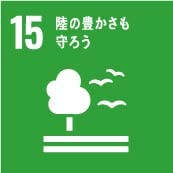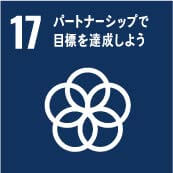Hinokage Town The culture of shimenawa and the art of wara-zaiku crafting
- Wara-zaiku Takubo Mr. Yoichiro Kai

Shimenawa displayed year-round
December. The year is coming to an end as icy winds race through Hinokage Town. At the studio of "Wara-zaiku Takubo," six crafters work silently in creating shimenawa, which are sacred ropes used for ritual purification.
Shimenawa are usually displayed during the New Year's holidays, but in the Takachihogo region including Hinokage Town, it is customary to display shimenawa at the main entrance of buildings throughout the year. Once the New Year's holiday arrives, they are replaced with new ones.
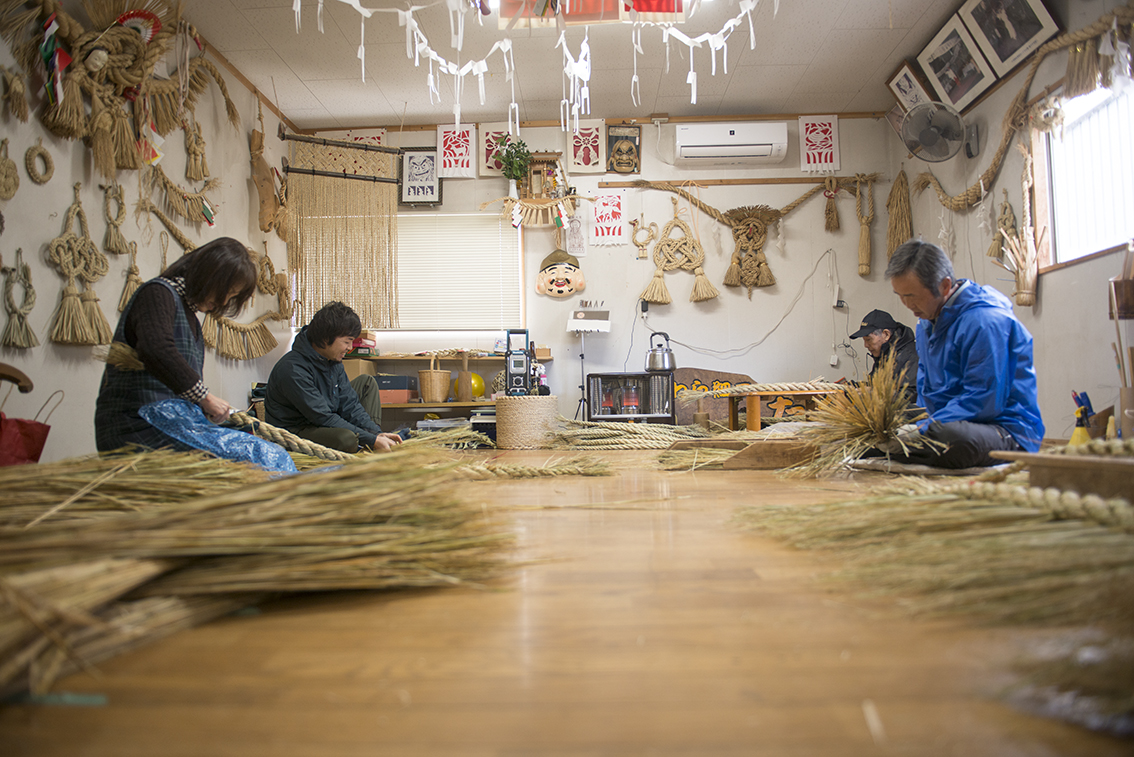
Wara-zaiku (straw-crafting) at "Wara-zaiku Takubo" started around 60 years ago. During the off-season for farmers, Mr. Yoichiro's grandfather used straw he had to create shimenawa. This marked the start of a tradition that has been passed down for three generations.
Yoichiro is a skilled artisan who creates various traditional crafts, but his roots can be traced back to a local, family business.
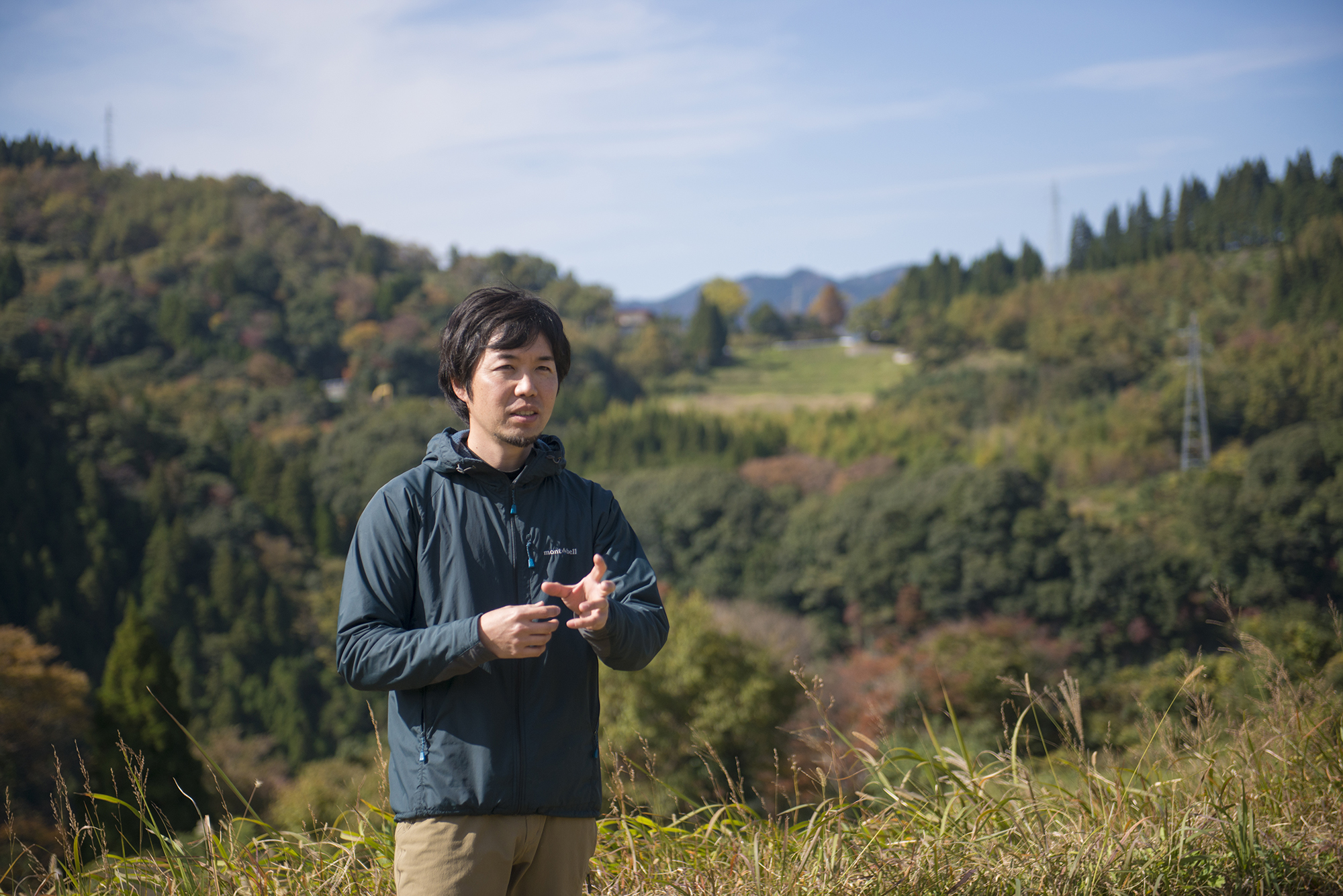
The number of wara-zaiku artisans is on the decline throughout Japan, but Mr. Yoichiro Kai believes that the tradition lives strong in this area, owing to the shimenawa culture.
"Throughout the year, we create various decorations for prosperity and good fortune, and about 80% of them are shipped outside the prefecture. However, we stop taking orders in December and concentrate on making shimenawa for the local people."
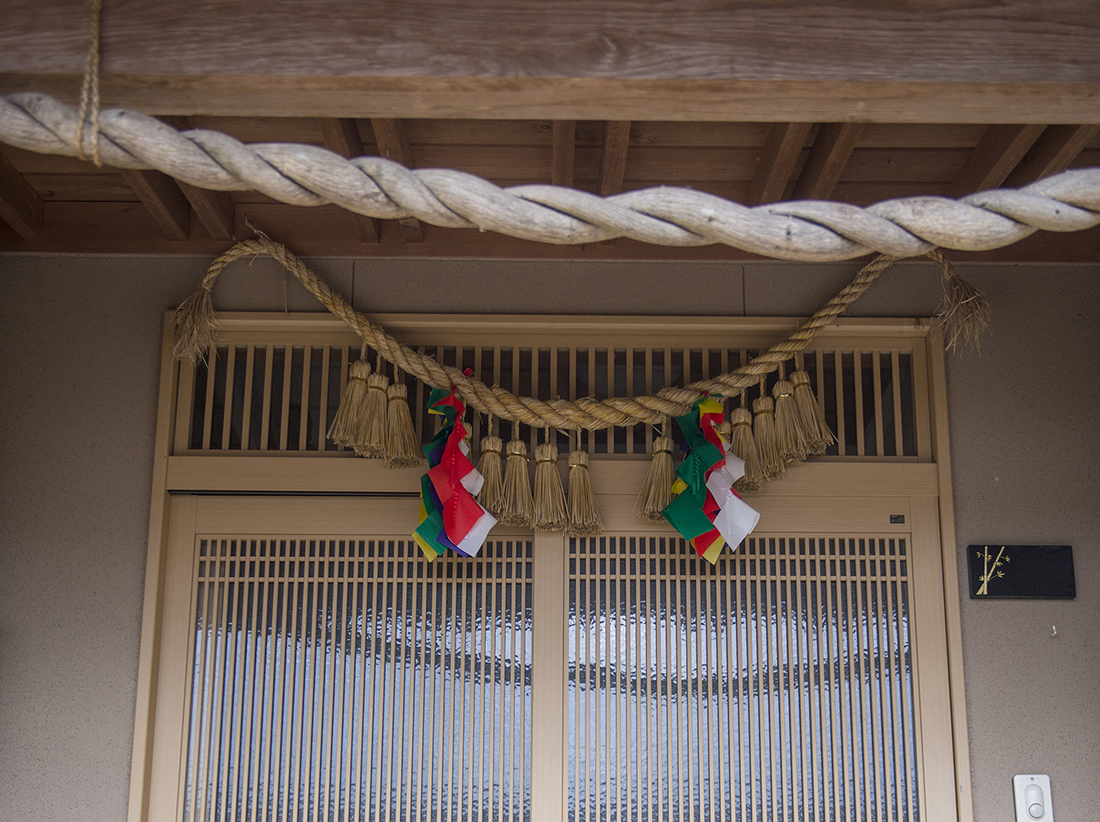
Living with the gods
It is said that shimenawa can act as a sort of "barrier." Legends say that its origins lie in the Amano-Iwato cave of Takachiho, where the goddess Amaterasu went into hiding. After she was taken out of the cave, they put a rope around it so that she could never enter again.
Yoichiro believes that the people of Takachihogo display shimenawa year-round because it shows the people's belief that they are living with gods inside their homes, within the confines of shimenawa.
"Life in the mountains can be very tough, much more than what we humans can handle. When we're faced with adversities, we pray, and this shows how the people here believe that gods exist all around us."
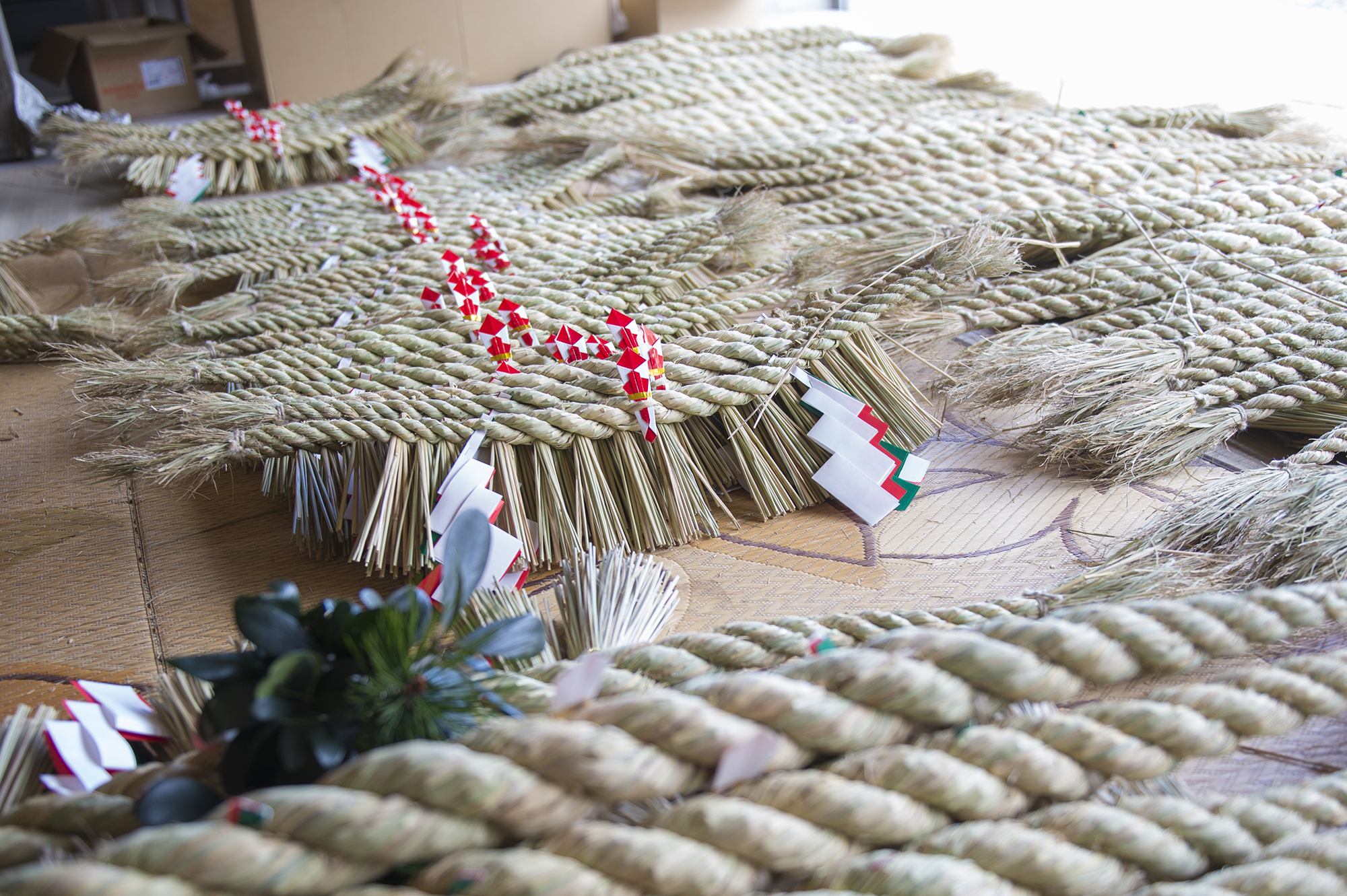
One way to write shimenawa in Japanese is to use the characters for the numbers "seven, five, and three." The numbers are said to represent different gods and play an important role in the shimenawa of this region. As the three numbers are all indivisible, it is believed that displaying shimenawa has the power to keep out evil.
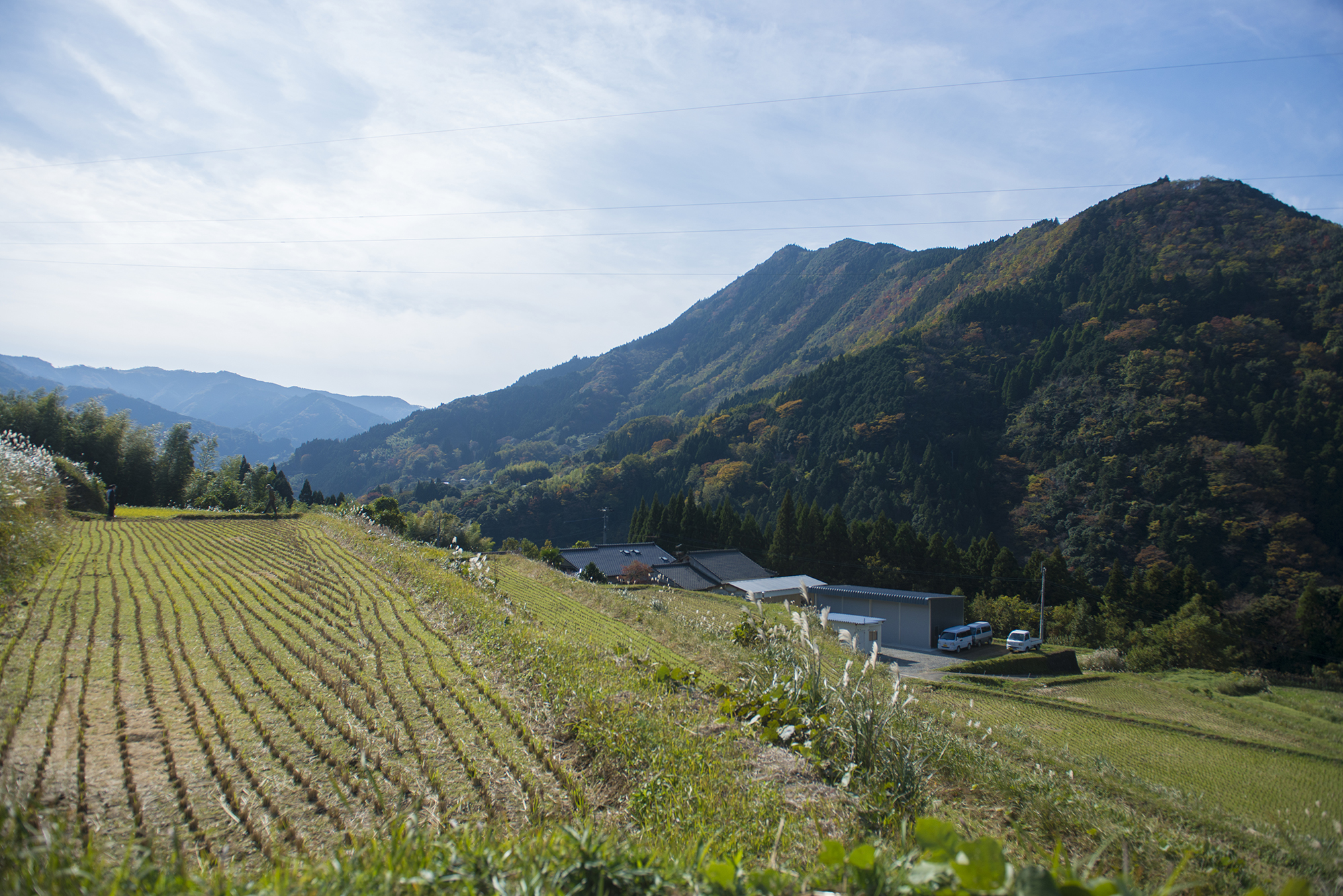
Passion for wara-zaiku
At Wara-zaiku Takubo, the crafting process starts with cultivating rice paddies. In spring, they grow seedlings and plant them in the paddies. Come August, the harvest of straw begins. This is all done without taking a break from crafting, so it is surely not something that can be done alone.
"You can craft things by yourself by simply buying the material, but that is not how it works with our wara-zaiku. There are countless steps involved, from cultivating paddies, growing seedlings, harvesting straw, drying, to rope twisting."
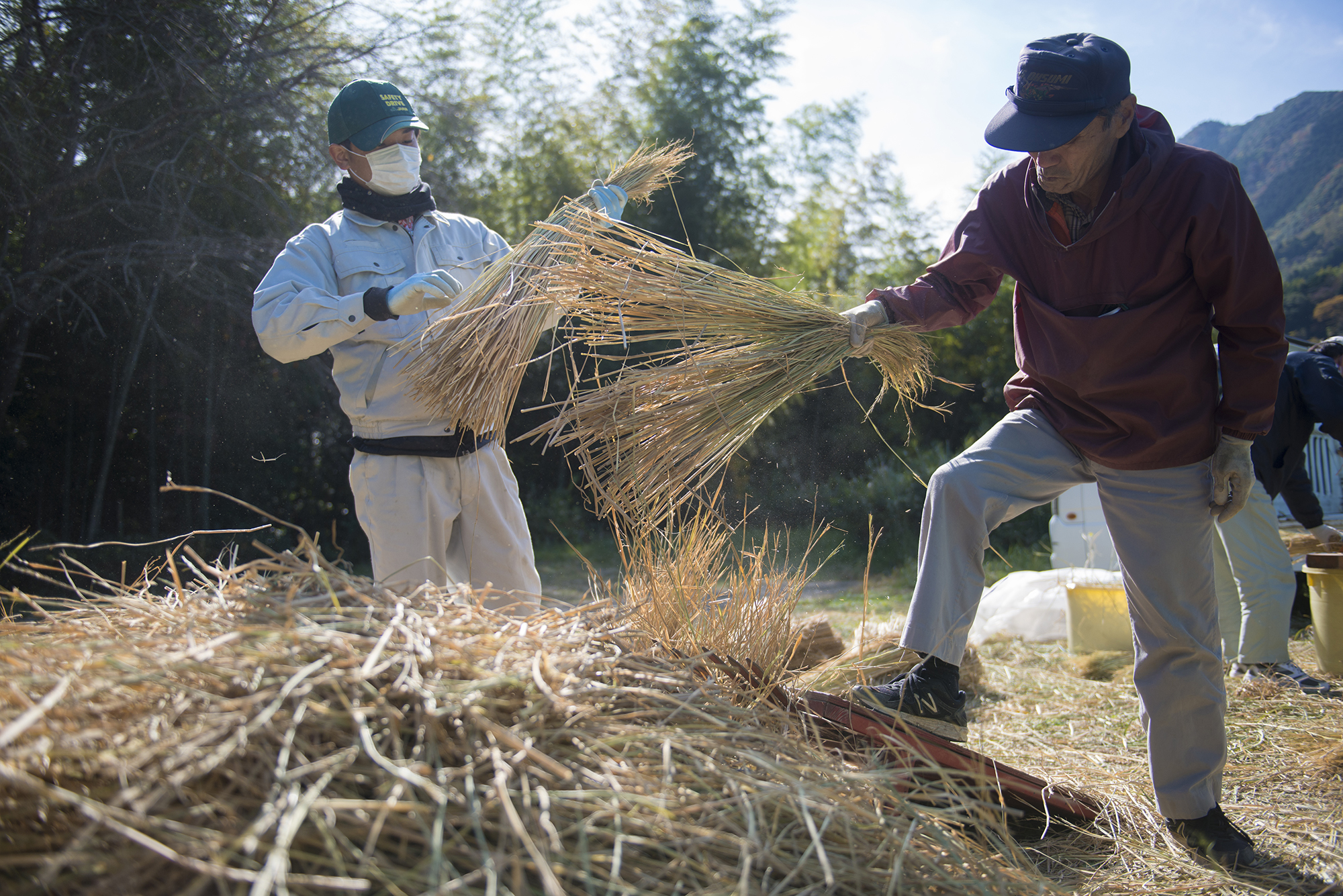
At this workshop, about 10 people from Mr. Yoichiro's family and nearby homes work together in keeping the crafting tradition alive. The team even includes workers over 80 years old, who are delighted to be embarking on a new stage in their life.
"I'm flattered that local residents are finding wara-zaiku crafting to be so rewarding and invigorating, and it gives me all the more reason to continue Wara-zaiku Takubo."
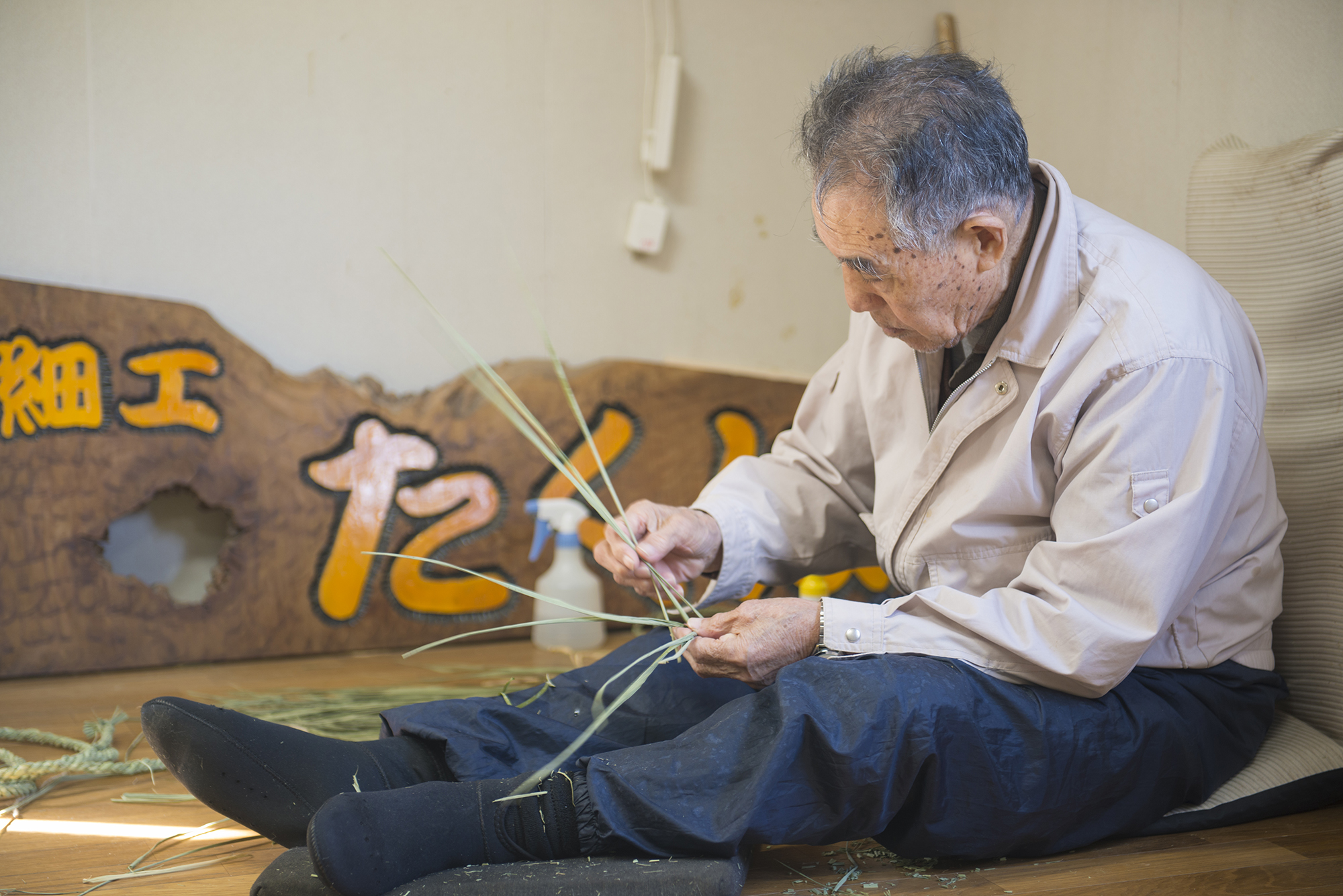
Using straw in everyday life
Mr. Yoichiro has been making shimenawa every December since he was a child. He says that since people in the area have always made wara-zaiku when there was no farm work, it is not considered a special skill.
But that is exactly why he wishes to establish techniques and methods that are unique to him.
"Wara-zaiku is made from straw, which is a byproduct of the most important food for Japanese people: rice. The craft is mostly used for decoration, and I feel that it will stay that day. However, my goal right now is to create practical wara-zaiku that can be used in everyday life."

Izumi
Straw is a heat-resistant material and is perfect for making izumi, which are weaved baskets used for keeping rice warm. The basket is weaved so that the nodes of the straw do not show, giving the product a smooth, uniform look.
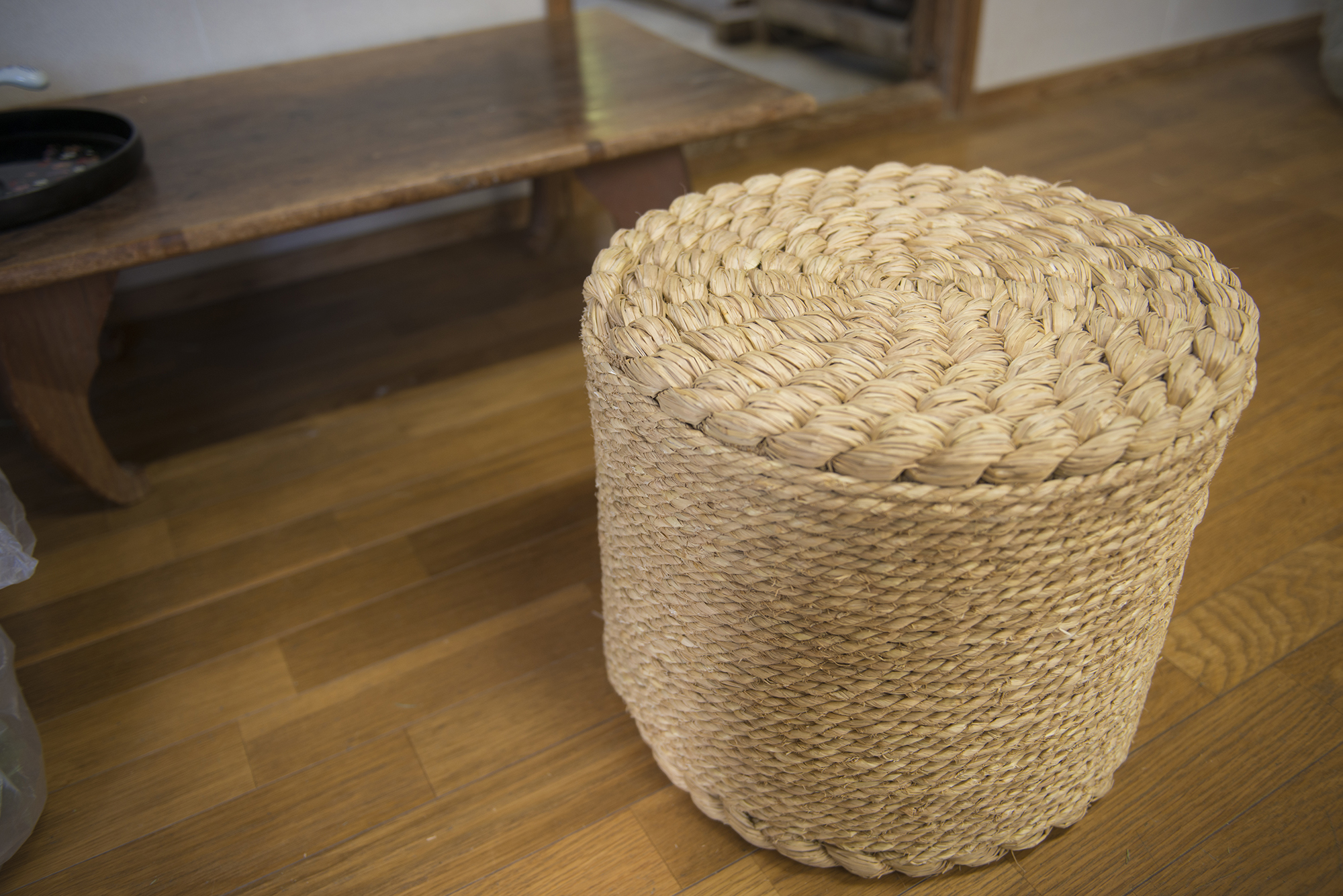
Seat
Seats made of straw offer unrivaled comfort that is softer than wood but harder than sponge.
"I'm hoping that I can further hone my technique so that one day I can hold an exhibition. By doing so, more people can learn about the culture here, where people come together to create rice paddies and make shimenawa."
The crafts produced at Wara-zaiku Takubo embody passion and tradition.




